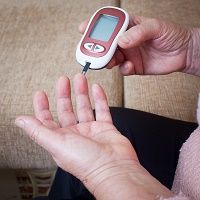Article
Do Diabetes Drug Clinical Trials Match Real-World Scenarios?
Author(s):
While medications go through extensive studies and research before being released to patients, the results in a controlled setting versus real-life situations may vary. Or do they?

While medications go through extensive studies and research before being released to patients, the results in a controlled setting versus real-life situations may vary. Or do they?
Lead author Wing Chow, PhD, and his colleagues examined canagliflozin, a sodium glucose co-transporter 2 inhibitor, and how it controls glycemic levels. The findings will be presented in a poster session on June 7 at the American Diabetes Association 75th Scientific Sessions in Boston, MA.
A total of 826 patients with type 2 diabetes — consisting of 41% females and an average age of 56 – were analyzed from April to October of 2013. The researchers recorded the patients’ A1C levels before beginning the 6-month study.
“In the pre-period, mean A1C was 8.59% and patients, on average, use 2.3 antihyperglycemic agents (AHAs) including injectables,” the authors wrote. “Among patients with an estimated glomerular filtration rate reading, 44% had values <90 ml/min/1.73m².”
The participants had an average of 3.7 canagliflozin fills with an 87% day rate. When A1C levels were examined following the treatment period, it was revealed that there was an average A1C reduction of 0.81%. The researchers noted that those that began with a higher A1C before starting the canagliflozin experienced a greater reduction.
Did these real-world results compare with those found in past clinical trials?
“Significant improvements in A1C were observed in the 6 months following the first [canagliflozin] prescription, with results consistent to those observed in the [canagliflozin] randomized clinical studies,” the team confirmed.




